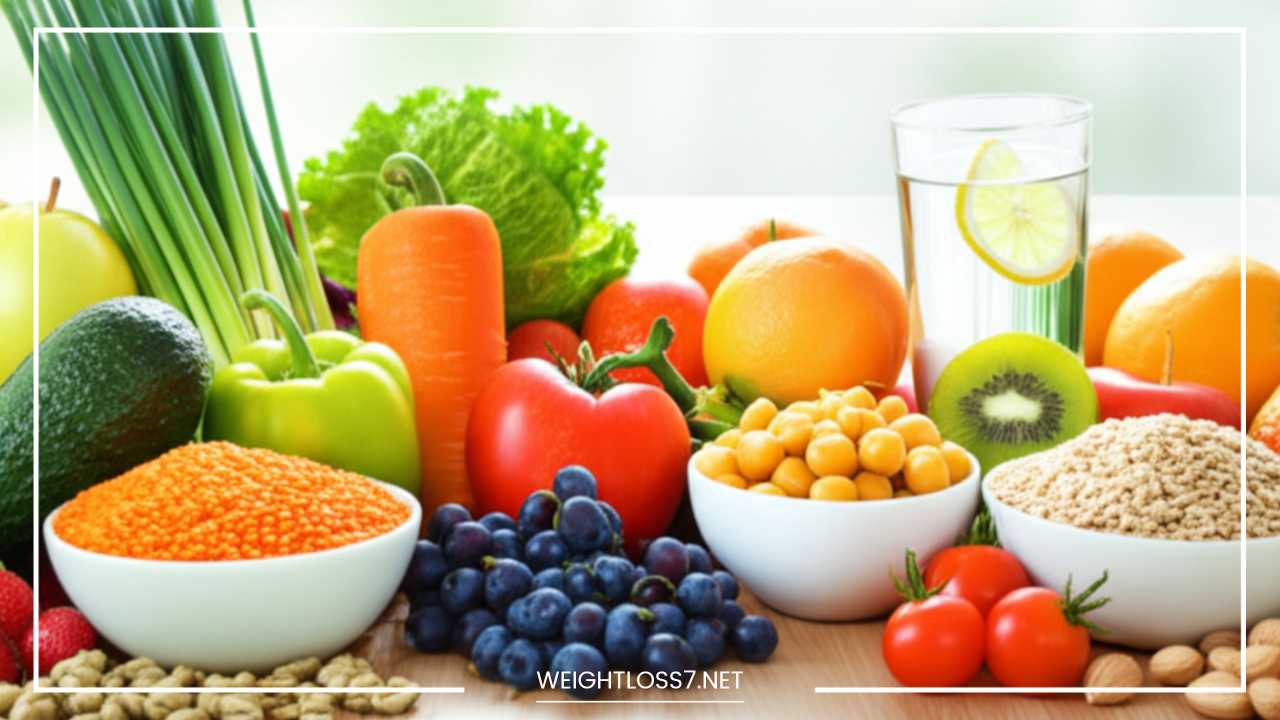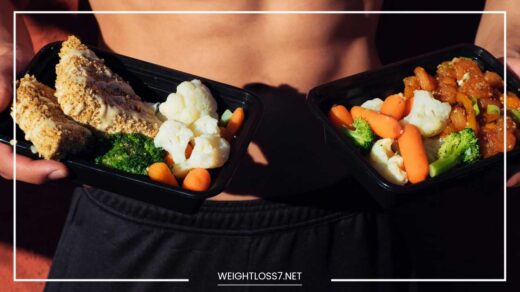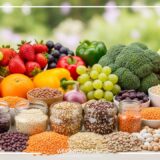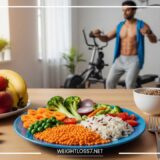Lose Weight Without Exercise
Losing Weight Without Exercise
In a world increasingly fixated on intense gym routines and grueling workout schedules, the notion of “lose weight without exercise” might seem like a mythical aspiration. Yet, for many, the traditional paths to weight loss are fraught with obstacles – physical limitations, time constraints, lack of motivation, or simply a deep-seated aversion to exercise itself.
This article delves into the profound truth that sustainable, significant weight loss is not solely, or even primarily, a function of physical exertion. Instead, it’s a sophisticated interplay of dietary choices, psychological well-being, lifestyle adjustments, and a nuanced understanding of your body’s intricate metabolic processes. Forget the sweat and the struggle; this is about achieving a healthier, leaner you through conscious, deliberate choices that nourish both your body and your mind.
Beyond the Treadmill: The Undeniable Primacy of Diet
Let’s be unequivocal: when it comes to weight management, diet is the undisputed champion. You can run miles daily, but if your food choices are consistently detrimental, your efforts will be largely negated.
The common adage, “You can’t outrun a bad diet,” holds profound truth. Our bodies are incredibly efficient at storing excess energy, and that energy primarily comes from what we consume.
The Calorie Conundrum: Understanding Energy Balance
At its most fundamental level, weight loss boils down to a simple equation: energy in versus energy out. To lose weight, you must consistently consume fewer calories than your body expends. This doesn’t mean starvation; it means strategic calorie reduction through mindful food choices.
- Identifying Your Basal Metabolic Rate (BMR): Your BMR is the number of calories your body burns at rest to maintain basic bodily functions1 (breathing, circulation, cell production). While an exact measurement requires specialized equipment, online calculators can provide a reasonable estimate based on your age, gender, height, and current weight. Understanding your BMR is the first step in determining a realistic calorie deficit.
- The Power of Small Deficits: A sustainable weight loss of 1-2 pounds per week typically requires a daily calorie deficit of 500-1000 calories. This can be achieved through dietary adjustments alone. Instead of drastic cuts, focus on consistent, manageable reductions.
Strategic Dietary Pillars for Weight Loss Without Exercise
The real magic happens not just in how much you eat, but what you eat. Certain food groups and dietary patterns are inherently more conducive to weight loss due to their impact on satiety, metabolism, and nutrient absorption.
-
Embrace the Fiber Revolution: Fiber is your silent partner in weight loss. Found abundantly in fruits, vegetables, whole grains, legumes, and nuts, fiber adds bulk to your meals without adding significant calories.
- Satiety Sentinel: Fiber expands in your stomach, promoting a feeling of fullness and reducing the urge to overeat.
- Digestive Dynamo: It slows down digestion, leading to a more gradual release of glucose into the bloodstream, preventing blood sugar spikes and subsequent crashes that can trigger cravings.
- Gut Guardian: Soluble fiber acts as a prebiotic, nourishing beneficial gut bacteria, which are increasingly recognized for their role in weight regulation and overall health.
- Practical Application: Start your day with a bowl of oats or whole-grain cereal with berries. Snack on apples, carrots, or a handful of almonds. Incorporate lentils, beans, and chickpeas into your main meals.
-
The Plant-Based Powerhouse: A Focus on Fruits, Vegetables, and Legumes: Shifting your dietary focus towards plant-based whole foods is perhaps the most impactful strategy for weight loss without exercise.
- Nutrient Density, Low Calorie: Fruits and vegetables are packed with vitamins, minerals, and antioxidants, yet are typically very low in calories. They allow you to eat voluminous meals without exceeding your calorie targets.
- Water Content Wonders: Many fruits and vegetables are high in water content, further contributing to feelings of fullness and hydration.
- Legumes: The Triple Threat: Lentils, beans, and chickpeas are powerhouses of plant-based protein, fiber, and complex carbohydrates. They are incredibly satiating, help stabilize blood sugar, and contribute to muscle maintenance even without exercise.
- Practical Application: Make half of your plate fruits and vegetables at every meal. Explore new plant-based recipes. Experiment with incorporating a variety of colors into your diet to ensure a broad spectrum of nutrients.
-
Harness the Power of Plant-Based Protein: While often associated with muscle building through exercise, adequate protein intake is crucial for weight loss even without physical activity.
- Thermogenic Effect: Protein requires more energy to digest and metabolize than carbohydrates or fats, meaning you burn more calories simply by consuming it (though this effect is modest, it contributes).
- Satiety Champion: Protein is incredibly satiating, reducing hunger pangs and cravings.
- Muscle Preservation: Even without exercise, a healthy protein intake helps preserve lean muscle mass during weight loss. Muscle is metabolically active, meaning it burns more calories at rest than fat. Preserving it is key for maintaining a healthy metabolism.
- Plant-Based Protein Sources: Lentils, beans, tofu, tempeh, edamame, nuts, seeds (chia, flax, hemp), quinoa, and spirulina are excellent plant-based protein sources.
- Practical Application: Include a plant-based protein source in every meal and snack. Consider adding protein powder (plant-based like pea or rice protein) to smoothies for an extra boost.
-
Complex Carbohydrates: The Steady Energy Source: Not all carbohydrates are created equal. Focus on complex carbohydrates over refined ones.
- Sustained Energy, Reduced Cravings: Complex carbohydrates (whole grains like oats, brown rice, quinoa, whole wheat, starchy vegetables like sweet potatoes and corn) are digested slowly, providing a steady release of energy and preventing the blood sugar rollercoaster that can lead to cravings.
- Nutrient Rich: Unlike refined carbohydrates (white bread, pasta, sugary cereals), whole grains retain their fiber, vitamins, and minerals.
- Practical Application: Opt for whole-grain versions of your favorite foods. Swap white rice for brown rice, white bread for whole-wheat bread. Limit sugary drinks and processed snacks.
-
Healthy Fats: Essential for Satiety and Function: While calorie-dense, healthy fats are crucial for satiety, nutrient absorption, and overall bodily function.
- Satiety and Flavor: Fats slow down digestion, contributing to a feeling of fullness and adding flavor to meals, making them more enjoyable and satisfying.
- Nutrient Absorption: Certain vitamins (A, D, E, K) are fat-soluble, meaning they require fat for proper absorption.
- Sources of Healthy Fats: Avocados, nuts (almonds, walnuts, cashews), seeds (chia, flax, pumpkin, sunflower), olives, and olive oil are excellent sources of healthy fats.
- Practical Application: Use healthy fats in moderation. A handful of nuts as a snack, a drizzle of olive oil on salads, or a few slices of avocado can enhance your meals without derailing your weight loss efforts.
Beyond Food: The Holistic Approach to Weight Loss Without Exercise
While diet forms the bedrock, several non-exercise lifestyle factors play a significant role in successful weight management.
-
Hydration: The Unsung Hero: Often overlooked, adequate water intake is incredibly important for weight loss.
- Metabolic Booster: Water is essential for countless bodily processes, including metabolism. Dehydration can slow down your metabolism.
- Appetite Suppressant: Sometimes, what we perceive as hunger is actually thirst. Drinking a glass of water before meals can reduce overall food intake.
- Detoxification: Water helps flush out toxins and waste products from your body.
- Practical Application: Aim for at least 8-10 glasses of water per day. Keep a water bottle handy as a visual reminder. Infuse water with fruits or herbs for added flavor.
-
Sleep: The Restorative Powerhouse: Chronic sleep deprivation wreaks havoc on your metabolism and hunger hormones.
- Hormonal Imbalance: Lack of sleep increases ghrelin (the hunger hormone) and decreases leptin (the satiety hormone), leading to increased appetite and cravings, particularly for high-calorie, sugary foods.
- Insulin Sensitivity: Poor sleep can impair insulin sensitivity, making it harder for your body to process glucose and leading to fat storage.
- Energy Levels and Willpower: When you’re tired, you’re less likely to make healthy food choices and more prone to emotional eating.
- Practical Application: Prioritize 7-9 hours of quality sleep per night. Establish a consistent sleep schedule, create a relaxing bedtime routine, and optimize your sleep2 environment.
-
Stress Management: Taming the Cortisol Beast: Chronic stress is a silent enemy of weight loss.
- Cortisol Release: Stress triggers the release of cortisol, a hormone that can promote fat storage, particularly around the abdomen.
- Emotional Eating: Many people cope with stress by turning to food, leading to increased calorie intake.
- Metabolic Slowdown: Chronic stress can interfere with metabolic processes.
- Practical Application: Incorporate stress-reducing activities into your daily routine: meditation, deep breathing exercises, yoga, spending time in nature, pursuing hobbies, or connecting with loved ones.
-
Mindful Eating: Savoring Each Bite: This powerful practice involves paying full attention to your food and eating experience.
- Recognizing Hunger and Fullness Cues: Mindful eating helps you differentiate between true physical hunger and emotional hunger. It teaches you to stop eating when you are comfortably full, not stuffed.
- Enhanced Enjoyment: When you truly savor your food, you often find greater satisfaction with smaller portions.
- Reduced Overeating: By slowing down and paying attention, you give your brain time to register fullness signals.
- Practical Application: Eat slowly, chew thoroughly, and put your fork down between bites. Eliminate distractions (TV, phone) during meals. Pay attention to the colors, textures, aromas, and flavors of your food.
-
Portion Control: The Hidden Calorie Trap: Even with healthy foods, portion sizes matter.
- Visual Cues: Our perception of portion sizes has been skewed by larger plates and restaurant servings.
- Calorie Density: Some healthy foods, like nuts and avocados, are calorie-dense, so portion control is crucial.
- Practical Application: Use smaller plates. Measure out servings, especially for calorie-dense foods. Learn to eyeball appropriate portion sizes (e.g., a serving of nuts is about a small handful, a serving of cooked grains is about the size of a light bulb).
-
Consistency Over Perfection: Weight loss is a journey, not a sprint. There will be days when you make less-than-ideal choices. The key is to get back on track consistently.
- Avoid All-or-Nothing Thinking: Don’t let one slip-up derail your entire effort. Learn from it and move forward.
- Sustainable Habits: Focus on building sustainable habits that you can maintain long-term, rather than restrictive diets that lead to rebound weight gain.
- Practical Application: Track your food intake for a few days to identify patterns. Set realistic goals. Celebrate small victories to stay motivated.
The Power of Self-Compassion and Patience
Embarking on a weight loss journey without exercise requires a significant shift in mindset. It demands patience, self-awareness, and a willingness to explore the deeper connections between your emotions, habits, and food choices.
- Be Kind to Yourself: There will be setbacks. Don’t beat yourself up. Learn from them and move on.
- Focus on Health, Not Just the Scale: While weight loss is the goal, focus on the overall health benefits you’re gaining – increased energy, better digestion, improved sleep, and a more positive relationship with food.
- Listen to Your Body: Pay attention to how different foods make you feel. What truly nourishes you? What leaves you feeling sluggish?
- Seek Support (If Needed): If you find yourself struggling with emotional eating or developing unhealthy relationships with food, consider seeking guidance from a registered dietitian or a therapist.
Final Thoughts: A New Paradigm for Weight Loss
The conventional wisdom that weight loss is inextricably linked to grueling exercise is incomplete. While physical activity offers immense health benefits, it is not an absolute prerequisite for shedding excess weight. By meticulously focusing on dietary quality, understanding the science of energy balance, prioritizing sleep, managing stress, practicing mindful eating, and embracing self-compassion, you can unlock a powerful, sustainable path to weight loss without ever setting foot in a gym.
This approach is about nurturing your body from within, fostering a harmonious relationship with food, and cultivating a lifestyle that supports long-term well-being. It is a testament to the profound power of conscious choice and the incredible adaptability of the human body, proving that a healthier, leaner you is within reach, one mindful bite at a time.


















